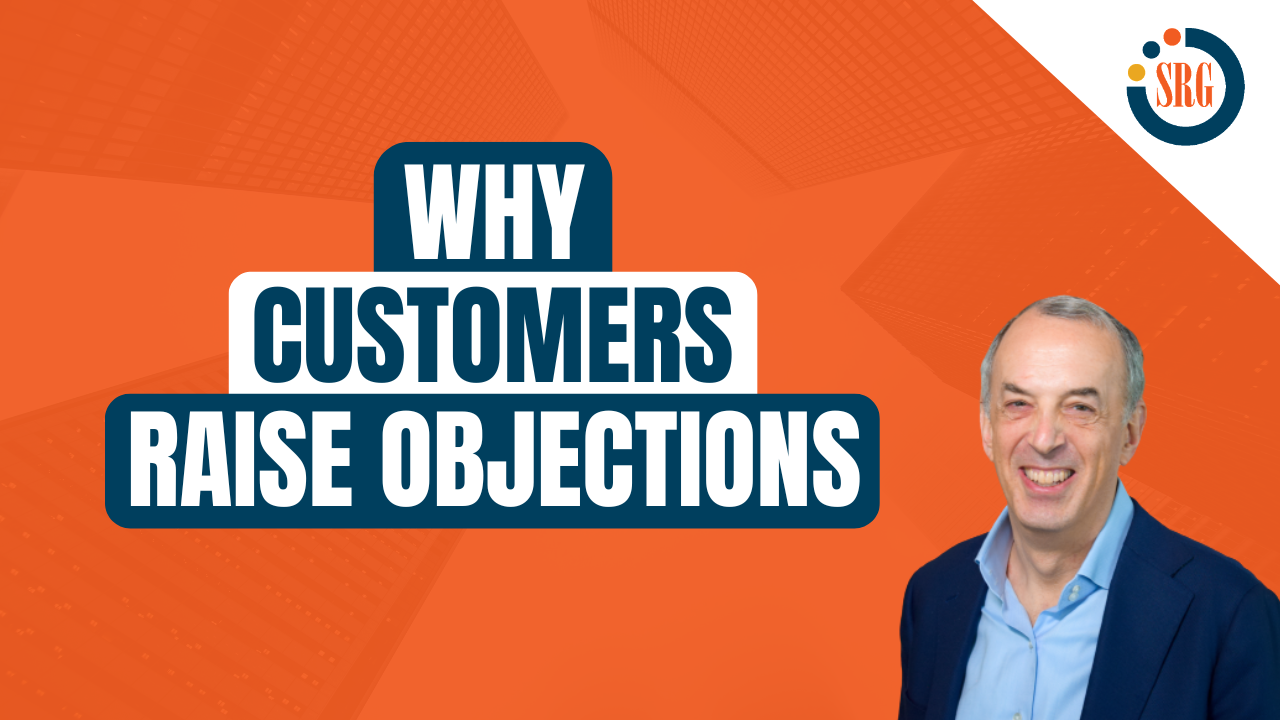Why Customers Raise Sales Objections


 In a perfect world, customers wouldn’t raise any sales objections. Sales professionals would precisely identify each customer’s needs and then present a carefully crafted solution that neatly addresses each of these needs. Customers would then, of course, clearly understand how they would benefit and quickly make a favorable purchase decision.
In a perfect world, customers wouldn’t raise any sales objections. Sales professionals would precisely identify each customer’s needs and then present a carefully crafted solution that neatly addresses each of these needs. Customers would then, of course, clearly understand how they would benefit and quickly make a favorable purchase decision.
In the real world, however, customers frequently raise objections, and these objections can take many forms – e.g., no money, no urgency, no need, etc... Many sales professionals are quick to respond to such objections with formulaic responses, such as “I know how you feel, many of our current customers felt the same way, but what they found…,” and then try to close the sale. While these types of responses have a place in a sales professional’s toolkit, a more effective approach is to prevent objections from being raised in the first place by addressing the root cause of the objection early in the sales process.
Fortunately, this isn’t as complicated as it sounds. The best sales training programs instruct sales managers that most objections are caused by one of the following:
- The customer does not believe your solution provides enough value.
- The customer is reluctant to make a change.
- The customer has a need that doesn't align with your solution.
Let’s look at each of these causes of sales objections in more detail.
Not Enough Value
When a customer is considering your solution, he or she is implicitly making a cost-benefit analysis. The customer will buy if the benefits of your solution exceed the cost; conversely, the customer won’t buy if the cost exceeds the benefits. Unfortunately, this value calculation is not scientific and is open to human error, judgments, and feelings - that is what produces a number of common objections, the most common of which is the price objection. A successful sales professional must be highly skilled at developing a deep understanding of his or her customer’s business, asking probing questions and presenting value.
A common trap sales professionals fall into is taking too narrow of an approach when discussing benefits and costs. If you look at the benefits, first think about how your solution can help the customer grow revenue, volume, or market share. This is often the first thing customers think about. Their priorities, however, will depend on where they are in the organization and how their performance is measured. It is important to determine both professional and personal drivers in order to align your benefits to those drivers.
On the cost side of the equation, it is dangerous to think only in terms of price. The nominal price of your solution is only one of numerous cost factors a buyer considers when making a purchase decision. Other cost factors include the total cost of ownership, costs associated with training, costs of switching vendors, and opportunity costs. It is essential that you consider all these other costs from your customer’s perspective and how they relate to your solution.
Here a few things to consider while you are establishing the value of your solution:
- Have you explicitly quantified all of the benefits of your solution?
- Did you fairly address all of the costs associated with your solution?
- Does your customer understand the economic consequences of taking action or not taking action?
Reluctance to Change
Sometimes a customer lets fear or political considerations trump the value of your solution. This seemingly irrational behavior by customers is exceedingly frustrating for sales professionals. But consider the situation from the customer’s perspective: perhaps the customer’s need simply isn’t strong enough to risk making a change, or maybe the current solution is good enough. In highly political organizations, decision-makers can be concerned about the career or reputational risk of making a change, so doing nothing might be the “safe” choice. This is particularly true when your contact is only an influencer and not the final decision-maker.
How do you overcome this problem? Here are a few considerations:
- Have you presented sufficient value to differentiate your solution from the status quo?
- Can you help the customer mitigate the risk of taking action by creatively structuring the business terms of the deal, such as offering a pilot program?
- Are you selling high enough up in the organization?
Solution Doesn't Fully Address Needs
An unfilled need is another cause of objections. Sometimes your solution doesn’t address one or more of the customer’s priorities. If the unfilled need is significant, this objection may be impossible to overcome. And that may be OK. If a customer has a need that you can’t satisfy, it may be time to walk away with your reputation intact as opposed o trying to close a deal that will result in an unhappy client. Unfortunately, sales professionals often spend too much time on opportunities that are not closeable.
That being said, most customers buy even though they don’t get 100% of what they want. So it is up to you to uncover opportunities where your solution can add compelling value.
Here are a few things to consider when discovering the needs of your customers:
- Have you identified all key decision-makers and their respective needs?
- Has your customer explicitly stated his or her need?
- Have you uncovered all possible needs (as opposed to jumping on the first need you discover)?